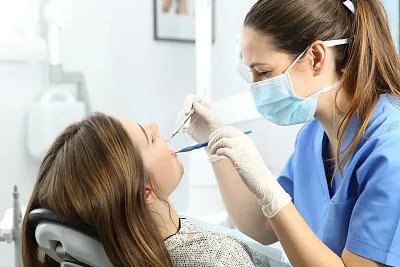The Essential Guide to Extracting a Tooth Safely and Effectively for Optimal Oral Health Outcomes
Summary: Extracting a tooth can be a daunting task, whether it is due to decay, overcrowding, or trauma. The Essential Guide to Extracting a Tooth Safely and Effectively for Optimal Oral Health Outcomes offers a comprehensive overview for patients and dental professionals alike. This guide covers the critical aspects of dental extraction, emphasizing the importance of safety protocols, patient preparation, post-extraction care, and the role of professional expertise. By adhering to these guidelines, individuals can ensure a smoother extraction process, significantly reducing complications and enhancing recovery. Understanding the nuances of tooth extraction not only alleviates anxiety but also promotes optimal oral health outcomes in the long run.
1. Importance of Professional Assessment Before Extraction

Before any tooth extraction, it is vital to undergo a professional dental assessment. Dentists utilize advanced diagnostic tools such as X-rays to evaluate the tooths condition and surrounding structures. This step helps in making an informed decision on whether extraction is indeed necessary. Conditions like severe decay, infection, or periodontal disease need thorough examination to determine the best course of action.
A complete health history review is also crucial. Patients must communicate any underlying health issues or medications they are taking, as these factors can influence the extraction procedure. For instance, patients with certain medical conditions may require special considerations, such as antibiotic prophylaxis or adjusted anesthesia protocols to ensure their safety and comfort.
Ultimately, a professional assessment provides a foundation for a successful extraction. It allows dentists to develop a customized treatment plan, ensuring that every aspect of the procedure is tailored to the patient’s specific needs, thus minimizing risks and enhancing outcomes.
2. Preparing the Patient for Tooth Extraction
Preparation is key to ensuring a seamless tooth extraction experience. The dentist will typically explain what the patient can expect during the procedure, which helps to alleviate anxiety. A clear understanding of the process makes patients feel more comfortable and secure. This includes discussing the type of anesthesia that will be used and the steps involved in the extraction.
Patients also need to adhere to pre-operative instructions, which may include avoiding certain medications, fasting for a specified time, or arranging for transportation home post-extraction. These guidelines are designed to enhance safety during the procedure and facilitate a smoother recovery.
Moreover, discussing aftercare prior to the extraction aids in setting expectations. Patients should be informed about applicable pain management strategies, dietary restrictions, and signs of complications to watch for after the extraction. This proactive communication significantly contributes to better oral health outcomes post-procedure.
3. Safe and Effective Tooth Extraction Techniques
Tooth extraction involves various techniques, with each tailored to the individual patients situation. For a simple extraction, where the tooth is visible and intact, dentists typically use a local anesthetic to numb the area before carefully loosening the tooth with specialized tools. The gentleness of the procedure minimizes trauma to the surrounding tissues, promoting faster healing.
In cases of complex extractions, such as wisdom teeth or teeth impacted within the jawbone, oral surgeons may employ more intricate techniques. Surgical extractions often require sedation to enhance patient comfort and may involve making an incision in the gum tissue. These procedures demand a higher level of expertise, highlighting the importance of skilled professionals in carrying out such extractions safely.
Throughout the extraction process, maintaining an aseptic environment is crucial to prevent infections. Dentists must adhere to strict hygiene standards, such as wearing gloves and utilizing sterile instruments. By employing these safe and effective techniques, dental practitioners can mitigate complications and significantly improve patient recovery experiences.
4. Post-Extraction Care for Optimal Recovery
The period following a tooth extraction is critical for recovery. Patients should follow the post-operative guidelines provided by their dentist, which often includes instructions for managing pain and swelling. Using ice packs, resting, and adhering to prescribed pain relievers helps manage discomfort effectively.
Additionally, dietary considerations play a significant role in recovery. Soft foods are recommended initially to avoid further irritation to the extraction site. Staying hydrated is equally essential, but patients should be cautioned against using straws as the suction can dislodge blood clots necessary for healing.
Lastly, monitoring the extraction site for signs of complications, such as excessive bleeding or unusual pain, ensures that any potential issues are addressed promptly. Regular follow-up appointments may be necessary to check the healing process, further contributing to optimal oral health outcomes.
Summary:
In essence, extracting a tooth requires meticulous planning and execution to ensure patient safety and health outcomes. From professional assessments and patient preparation to extraction techniques and post-operative care, each aspect plays an integral role in the overall process. Awareness and adherence to recommended practices not only alleviate anxiety but also promote effective healing.
Providing comprehensive care and professional oversight are paramount in the extraction process, ensuring patients experience minimal discomfort and optimal results. This approach reinforces the importance of dental visits and encourages proactive oral health management.
This article is compiled by Vickong Dental and the content is for reference only.


